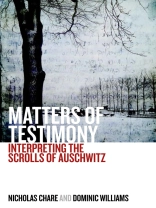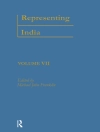In 1944, members of the Sonderkommando—the “special squads, ” composed almost exclusively of Jewish prisoners, who ensured the smooth operation of the gas chambers and had firsthand knowledge of the extermination process—buried on the grounds of Auschwitz-Birkenau a series of remarkable eyewitness accounts of Nazi genocide. This careful and penetrating study examines anew these “Scrolls of Auschwitz, ” which were gradually recovered, in damaged and fragmentary form, in the years following the camp’s liberation. It painstakingly reconstructs their historical context and textual content, revealing complex literary works that resist narrow moral judgment and engage difficult questions about the limits of testimony.
Table des matières
Acknowledgments
Preface
Introduction: Matters of Testimony
Chapter 1. Matters of History
Chapter 2. Zalman Gradowski: Literature in the Death Factory
Chapter 3. Scattered Selves: The Stories of Leyb Langfus
Chapter 4. Final Arrangements: Zalman Lewental’s Histories of Resistance
Chapter 5. Characters and Letters: Chaim Herman and Marcel Nadjary
Chapter 6. The Camera Eye: Four Photographs from Birkenau
Conclusion: Crossing the Circle of Flame
Appendix
Index
A propos de l’auteur
Dominic Williams is a Montague Burton Fellow in Jewish Studies at the University of Leeds. He has published articles on modernism, the First World War, contemporary poetry and the Holocaust. In addition to co-editing Representing Auschwitz, he has co-edited, with Fabio A. Durão, Modernist Group Dynamics: The Politics and Poetics of Friendship.












